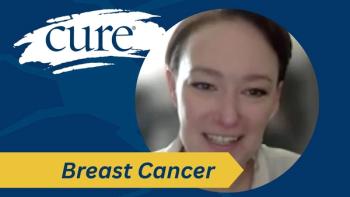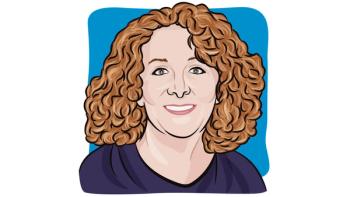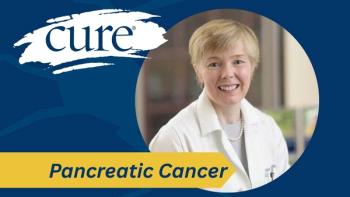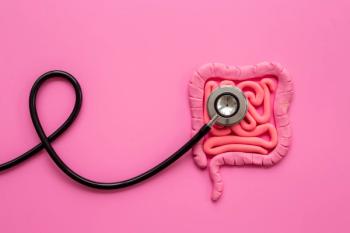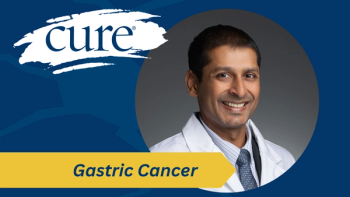
- Heal Fall 2021
An Oncologist Who Understands Surviving the Other Side of Cancer
Dr. Curtis Mack can relate to his patients on a level other radiation oncologists might not be able to because he has received a diagnosis, gone through treatment and survived cancer himself.
Dr. Curtis Mack, a radiation oncologist at Arizona Oncology, switched roles in 2013 after he received a diagnosis of acute lymphoblastic leukemia. Mack had to change his lifestyle after treatment, just as any survivor does. Being a survivor changed his life, and as an oncologist, he knew what his patients were going through and could offer relatable advice and stories of his own journey.
The Other Side of Radiation
After running a half marathon in June 2013, Mack knew something was off. He had run many races, but this time he was slower, and it was the first time he didn’t enjoy it. But he thought he must not have trained well enough. Time went on, and he even went camping at 8,000 feet, but he spent most of his time by the fire because his hands were cold. And during a few runs with friends, he asked to walk, which was out of the ordinary for him. That’s when he decided to get a blood test.
The next day, Mack’s blood test results showed that he had acute lymphoblastic leukemia.
Although Mack is a radiation oncologist, he didn’t know what to expect in all parts of his cancer journey. Through his career, his interactions with patients with leukemia has been minimal, but he knew what to expect when he received total body radiation. But the chemotherapy was all new to him.
“I was a pretty good patient. I didn’t complain too much,” he said.
A Million Friends
Mack received prednisone, a steroid often used to reduce inflammation during treatment and says he always felt hungry. During Mack’s time in the hospital, the chief medical officer and hospital administrators would check in on him. He would tell them he was fine but that there were starving people in there.
Mack would have his first breakfast at 5:30 a.m., a second at 8 a.m., then lunch, then dinner and then another dinner brought by friends. His appetite, however, did not last long. After a stem cell transplant, his nutrition was strictly IV and fluids.
“(I) could not eat if I wanted to and believe me, I did not want to,” he recalled.
Mack said “a million friends” helped him through his treatment. He had high points and low points, just like any other patient, but he really appreciated his friends bringing him food and trying to distract him.
“I did some silly calls with the office and office parties and stuff like that just to feel connected,” he explained.
Mack was also grateful that people would bring his dogs to visit. His two Weimaraners are always by his side, even while he spoke with Heal®, and the younger one has been helping him train for his first race, which occurred recently, since the one in 2013.
Transitioning Back
Mack thought he would be able to get back to work right away, but he said the doctors laughed at him and told him he would need time to recover and get stronger first. He felt pretty weak after treatment and decided to start exercising, beginning with walking lunges.
He went down and couldn’t get up after one lunge. He tried walking along a (hand) rail. That didn’t work either. He finally followed some instructions from a physical therapist for exercises in a chair that helped.
“So transitioning was basically spending time getting stronger, exercising, walking, so that I could feel ready to go into the clinic,” he said. He might have felt ready physically, but mentally he was worried.
“I was scared to death about resuming work. It had been exactly one year ... and before, I was reading journals, keeping up on newsletters, seeing patients,” he noted.
He said he would think to himself, “I’m going to walk in the clinic, I’m not going (to) know anything, I’m going to be stupid, I’m not going to know how to do anything.”
But he proved himself wrong and remembered everything. “Surprisingly, I walked back into the clinic and it was almost like I never left,” he said. He added that at the start it wasn’t bad; mostly he was just feeling tired.
Mack was able to relate to his patients on a different level after his own treatment. “I was a pretty empathetic guy before. But there’s no way you can’t be more empathetic,” he recalled. He could relate to patients better and tell them they would get their appetite back since it had happened for him. He said the patients appreciate when he tells them he has been through the same experiences, because they feel he can understand them more.
Being a Survivor
Being a survivor has changed Mack’s life. “It’s changed my priority somewhat,” he said. After he survived cancer, people would ask if he would go back to work, and he’d say “Of course,” because he loves his job, working with the patients and doing good for people.
Mack just completed the half marathon he had been training for. He was happy with his time of just under two hours, only 28 minutes slower than when he was running before his diagnosis. He is happy to be back training, of course, with the help of his younger dog, Lexi.
Cancer taught Mack that sometimes life stops, and there might not be time for regular activities. So now he doesn’t feel as though he has to read every paragraph of every email he gets, or if something is delivered in six weeks instead of two days — no big deal.
“It’s really good to say that I don’t sweat the small stuff as much as I used to,” he concluded.
Listen to Mack's interview on the "CURE Talks Cancer" podcast
For more news on cancer updates, research and education, don’t forget to
Articles in this issue
about 4 years ago
Sleep Disturbance in Cancer Survivors Needs to be Addressedover 4 years ago
Now Everyone Understands What Cancer is Likeover 4 years ago
The Game of Cancerover 4 years ago
Cancer Remission: Time to Breathe Againover 4 years ago
Why Cancer Survivors Cannot Always Be Positive
